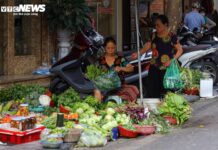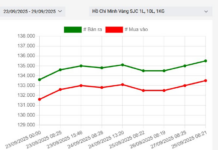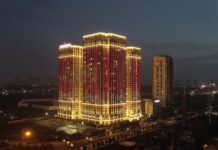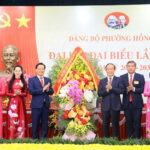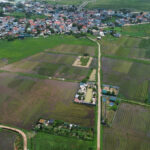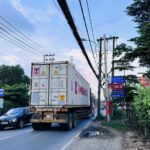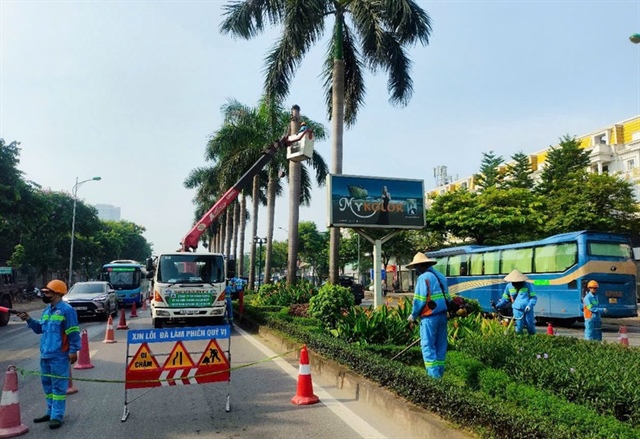
Multiple units maintaining green spaces in Hanoi simultaneously embark on urban beautification. |
To celebrate these significant holidays, in addition to organizing commemorative activities, it is mandatory to spruce up the city, creating a green, clean, beautiful, and civilized environment.
In this context, on August 13, 2025, Prime Minister Pham Minh Chinh issued Dispatch No. 134/CD-TTg, launching a nationwide environmental protection movement, calling for a general clean-up, aiming for a fresh look for urban and rural areas and public spaces during this momentous celebration.
Let’s create a substantial movement
The Dispatch sets out clear and actionable requirements: Initiate a general clean-up campaign, promote awareness to encourage citizens to voluntarily maintain hygiene in their homes and neighborhoods, strategically place garbage bins and collection points, organize timely waste collection, sorting, and treatment, and strengthen inspection and strict handling of violations. The specificity and feasibility of these tasks enable local authorities to easily implement them, resulting in tangible outcomes rather than a superficial campaign.
Notably, the Dispatch mobilizes the combined strength of the entire political system and the community. The Youth Union, Women’s Union, Association of Veterans, and Farmers’ Association are assigned core roles, organizing and supervising activities in residential areas and public spaces. The Fatherland Front and its member organizations guide and replicate models such as “Green-Clean-Beautiful Residential Area” and “Civilized Street, No Littering” to ensure the widespread reach and long-term sustainability of the movement.
Additionally, local authorities are instructed to review and supplement environmental sanitation infrastructure, including collection vehicles and collection points in crowded places such as markets, schools, bus stations, amusement parks, and festival venues. Waste collection and treatment must be timely, especially during the holidays, at tourist attractions, residential areas, streets, and beaches, to ensure that both urban and rural areas maintain a clean and civilized appearance.
The media plays a crucial role in creating a ripple effect. The Dispatch assigns the task to the press, television, and official information channels to increase coverage, introduce effective models and good practices, and frankly point out places that fall short. This approach not only encourages local authorities to step up their efforts but also helps citizens recognize the direct impact of the movement on their daily lives.
Beyond the immediate goal of serving the anniversary celebrations, the Dispatch lays the foundation for a long-term vision by tasking the Ministry of Agriculture and Environment to prepare a draft resolution of the Government on environmental protection. If enacted and implemented, this resolution will serve as a basis for the environmental sanitation movement to become a regular practice, contributing to the formation of a modern, civilized, and environmentally friendly Vietnam.
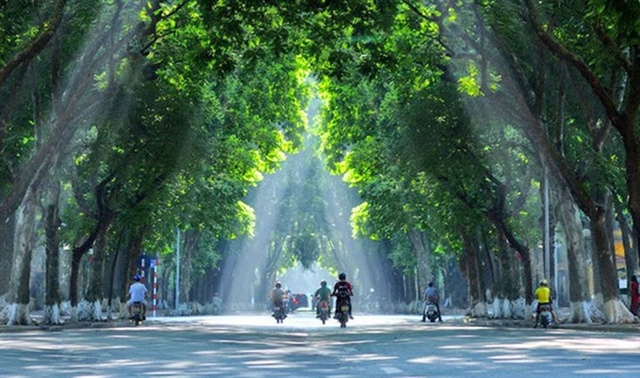
Green environment and green spaces are among the foremost measures of quality of life. |
Significance of the Dispatch
The Dispatch serves as a “lever” of governance, transforming this significant holiday into an opportunity to thoroughly review, rectify, and standardize environmental work from the ground up. In terms of organizational implementation, the document activates a “total mobilization” mechanism at the grassroots level: Chairpersons of People’s Committees of localities must mobilize mass organizations to play a core role in organizing, guiding, and supervising the movement right at the residential areas and public spaces, thereby changing behaviors where most of the waste is generated.
Along with this is a very specific technical mandate: Review and arrange waste collection infrastructure (garbage bins, collection points, vehicles), ensure timely collection, sorting, and treatment, and strengthen inspection and strict handling of indiscriminate waste disposal—thus combining “hard framework” (discipline, sanctions) with “soft framework” (habits, lifestyle).
This is also an opportunity for provinces and cities to carry out a large-scale “general clean-up,” addressing critical issues related to waste, wastewater, and degraded landscapes. Through this movement, local authorities can transform chaotic streets into civilized ones, wastelands into parks, and polluted canals into clean waters.
Pollution, waste, and unsightliness have long been significant issues in Vietnam, directly impacting community health, quality of life, and the country’s image. By seizing this opportunity, localities can create bright, green, clean, beautiful, and modern spaces that meet the needs of the people and leave positive impressions on visitors.
In terms of social outreach, the Dispatch clearly assigns roles to mass organizations: The Youth Union organizes volunteer teams, schools collaborate on waste sorting education, the Women’s Union launches the “Clean House, Beautiful Alley” and “Family of 5 Nos and 3 Cleans” campaigns, veterans set an example for community supervision, and the Farmers’ Association promotes models such as “Flower Street, Green Tree Street” and “Green-Clean-Beautiful-Safe Village.” These “social cells” form the local implementation network, translating policies into concrete daily actions.
The central and local press is entrusted with the role of “amplifier” of the movement – increasing propaganda, praising good models, and criticizing shortcomings – creating positive social pressure to ensure that environmental sanitation is continuous rather than a short-lived campaign.
At the institutional level, the Dispatch unlocks a more sustainable step: requesting the development of a draft resolution of the Government to mobilize resources and standardize environmental policies; and assigning the Government Office to monitor and urge localities – forming a vertical axis of responsibility from the central to local levels, helping the movement transcend temporariness.
The Dispatch serves as a “bridge” between the event and reform: It creates a “window of opportunity” for localities to decisively address critical waste issues, standardize infrastructure, and shape public behavior norms. If well-grasped, the quality of life of the people, tourism attractiveness, and urban competitiveness can be significantly improved. To ensure effectiveness, it is necessary to accompany transparent measurement indices (collection progress, garbage bin density, source segregation rate, and citizen satisfaction) and regularly publicize the monitoring results – thus, the movement will be substantive and sustainable.
Dr. Nguyen Si Dung
The Capital’s Transformation: Revitalizing 169 Subpar Lands for a Brighter Future
The Hanoi Department of Agriculture and Rural Development has identified 169 plots of land that were proposed for commercial housing projects through negotiations as per the National Assembly’s Resolution 171. However, these proposals did not meet the specified criteria and regulations.





